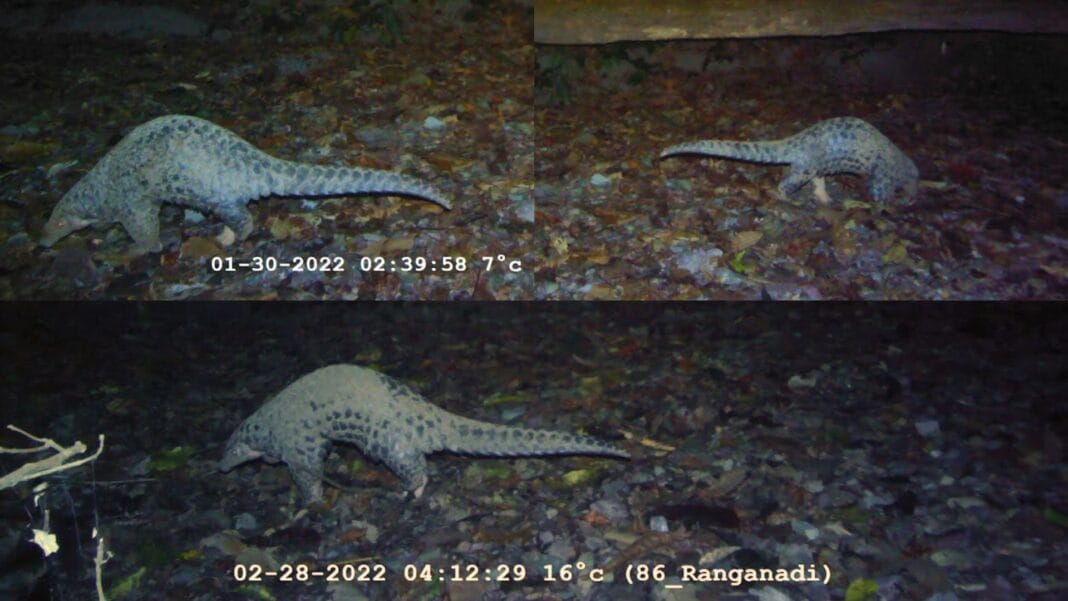Groundbreaking Discovery in Raimona National Park
In a groundbreaking discovery, conservationists and forest officials have recorded the first photographic evidence of the Chinese pangolin (Manis pentadactyla) in Assam’s Raimona National Park (RNP). This elusive and highly trafficked mammal was captured on camera as part of a collaborative study aimed at enhancing conservation efforts in the region.
Full Review
The Chinese pangolin, a critically endangered species, has long been a symbol of the challenges faced by wildlife conservationists. The recent sighting in Raimona National Park marks a significant milestone in the efforts to protect this elusive creature. The collaborative study that led to this discovery involved a team of dedicated researchers and forest officials working tirelessly to monitor and document the biodiversity of the region.
The camera trap that captured the images of the Chinese pangolin provides valuable insights into its behavior and habitat preferences. This data will be crucial in formulating conservation strategies that can effectively safeguard the species from poaching and habitat loss. The discovery has sparked renewed hope among conservationists and wildlife enthusiasts, underscoring the importance of preserving the rich biodiversity of Assam’s forests.
FAQs
What is the significance of finding the Chinese pangolin in Raimona National Park?
The discovery of the Chinese pangolin in Raimona National Park is significant as it provides valuable data for conservation efforts and highlights the biodiversity of the region.
Why is the Chinese pangolin considered critically endangered?
The Chinese pangolin is critically endangered due to habitat loss, poaching for its scales, and other threats that have led to a drastic decline in its population.
How can the discovery of the Chinese pangolin impact conservation efforts?
The discovery of the Chinese pangolin can lead to enhanced conservation strategies and awareness campaigns to protect this vulnerable species.
What role did collaborative research play in finding the Chinese pangolin?
Collaborative research involving conservationists and forest officials was essential in capturing the first photographic evidence of the Chinese pangolin in Raimona National Park.
How can individuals contribute to the conservation of endangered species like the Chinese pangolin?
Individuals can contribute to conservation efforts by supporting wildlife protection laws, raising awareness about endangered species, and advocating for sustainable practices.
What challenges do conservationists face in protecting the Chinese pangolin?
Conservationists face challenges such as illegal wildlife trade, habitat destruction, and lack of resources in their efforts to protect the Chinese pangolin and other endangered species.
What are the habitat preferences of the Chinese pangolin?
The Chinese pangolin prefers forested areas with access to water sources where it can find its main food source, ants and termites.
What are some conservation initiatives in place to protect the Chinese pangolin?
Conservation initiatives include habitat restoration, anti-poaching patrols, community engagement programs, and research to better understand the behavior and ecology of the Chinese pangolin.
What can be done to raise awareness about the conservation status of the Chinese pangolin?
Raising awareness through educational campaigns, media outreach, and community involvement can help increase public support for conservation efforts aimed at protecting the Chinese pangolin.
What are the future prospects for the conservation of the Chinese pangolin in Assam?
The discovery of the Chinese pangolin in Raimona National Park highlights the potential for increased conservation efforts and collaboration to ensure the long-term survival of this critically endangered species in Assam.

